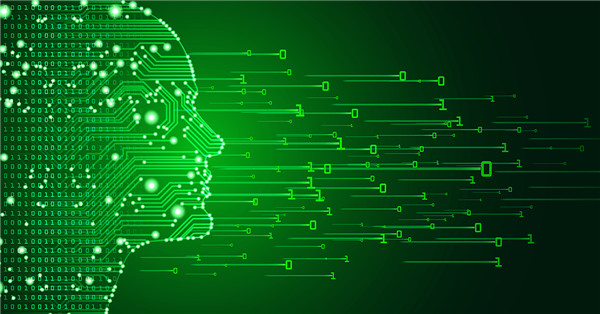Rise of the Machines: Investment Jobs Now Redundant?
Rise of the Machines: Investment Jobs Now Redundant?
By Raphael Douady, PhD, Milind Sharma and Paul McCaffrey Posted In: Careers, Drivers of Value, Economics, Future States, Portfolio ManagementWill computers completely replace humans in financial management? Can robots carry out the asset management functions, the financial operations, and all the other tasks now performed by people?
Certainly, compared with most other industries, finance is especially dematerialized: Robots in finance don’t need hands, arms, and legs — just the capacity to crunch numbers. And silicon chips can do that incomparably faster than we can. The problem is that even if finance creates a world of its own, that creation deeply interacts with the real world. Just like a hurricane in the high atmosphere can devastate everything on land, catastrophes in the financial world have real consequences on real people’s lives.
So can we trust these machines?
This may sound like science fiction, but science these days moves faster than fiction and, as scary as it sounds, we already live in a world that is at least partially controlled by machines. We humans must now adapt to the new reality we ourselves have created. As with evolution, stepping backward is not an option.
Before considering the potential threat posed by machines and artificial intelligence (AI), whether to finance professionals or the larger economy, we should acknowledge that financial markets were creating catastrophes long before computers.
Robert J. Frey studied the size and frequency of financial crises over two centuries. When properly monitored with appropriate “fat tail” models, these events haven’t evolved much, despite differing regulatory regimes and increasing computerization. This suggests that from a pure catastrophic-risk standpoint, massive automation will not alter the frequency and size of catastrophes in the financial ecosystem all that much.
But who will gain and who will suffer from this digital revolution? And will machine learning terminate human advisers?
Thus far, behind the machines are the people who programmed them. And that dynamic will continue for at least the next generation. While computers have started to generate code, those computers still have to be programmed by humans. Thus those who can create and administer the technology used in financial markets, whatever their role in the service chain, won’t lose their jobs. On the contrary, they will be in high demand.
Machines in finance are not ready to work on a stand-alone basis. They require specialized knowledge, whether economic, financial, statistical, or mathematical. Currently, at best, they can augment the efforts of expert humans. They cannot fully replace them. The health care field demonstrates this dynamic quite well: Imaging systems, blood analyzers, and sophisticated computer diagnostic assistants help human medical professionals perform their jobs, but they cannot do the job for them without putting lives at risk. The best outcomes, therefore, develop from clever cooperation between humans and machines, not from one ignoring the other, however sophisticated.
Despite the bold forecasts of the sorcerer’s apprentices, the computer scientists working with the emerging technology of machine learning and its associated innovations, such technology can only be efficiently applied by experienced humans. And for good reason. An algorithm isn’t necessarily less risky than a human.
Think of two specific “technologies”: the pure biological operation of the human brain (setting aside the more loaded questions of consciousness, intelligence, etc.) and the “silicon intelligence” of computers. The human brain comprises a highly connected, multi-threaded system with extremely slow computer processing units: a few hundred cycles per second versus the several billion of today’s laptops. The brain’s trillions of synapses compensate for the reduced processing speed, so at least several billion operations are still performed each second.
The adult brain has been trained for decades. It also benefits from a billion years of evolution. Practically speaking, the main difference between the human brain and computers comes down to risk management. The human brain can anticipate and plan for all sorts of conceivable scenarios. It also knows that not all information has the same value. Some data deserves its full attention and requires immediate processing. Other data can simply be ignored.
The computer, meanwhile, can sort through a range of “school cases” that it learned from to arrive at the optimal decision should one of these cases occur. But it lacks the long-term experience to safely discard useless information, even if doing so is critical for an appropriate and timely reaction. Processing all the available information, whatever the speed of the computer, will create too slow a decision-making process.

Moreover, whether it’s machine learning or some other form of AI, it is still — and needs to be — an expression of its designer. That’s just the opposite of what we often hear these days, when people say, “Let the data speak.” Data will only show what it contains, which is the limited size of its training set.
That’s why those who can best deploy a human–machine hybrid approach will have the advantage in the years ahead.
So those who fail to adapt to the digital revolution will certainly suffer career risk. Whatever our expertise, we will have to learn to “cooperate” with AI one way or another.
But machines do not pose the existential threat to human financial professionals that some claim. Nor do they offer the universal panacea that some computer scientists seem to dream of.
If you liked this post, don’t forget to subscribe to the Enterprising Investor.
All posts are the opinion of the author. As such, they should not be construed as investment advice, nor do the opinions expressed necessarily reflect the views of CFA Institute or the author’s employer.
Image credit: ©Getty Images/Ryzhi
Continuing Education for CFA Institute Members
This article is eligible for continuing education (CE) credit. Record credits easily using the CFA Institute Members App, available on iOS and Android.